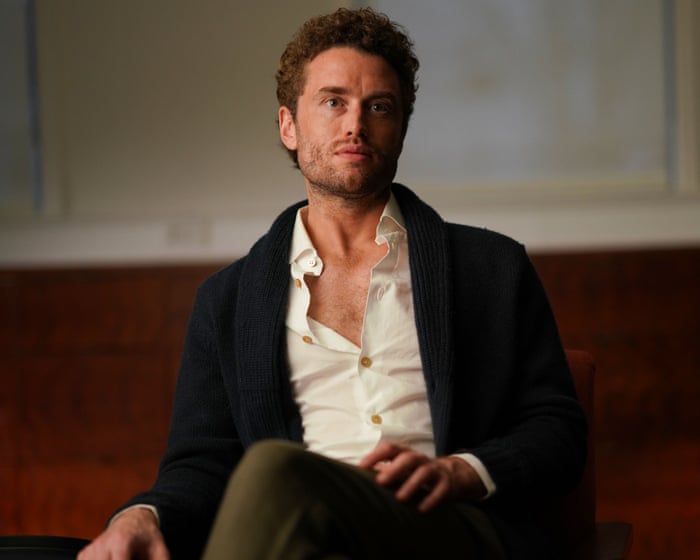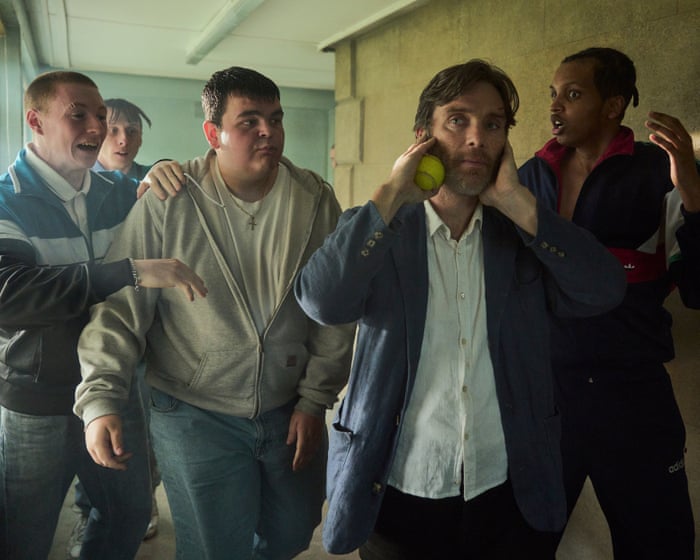As an art dealer in London and Miami, Inigo Philbrick seemed to have the Midas touch, enjoying a lavish lifestyle complete with private jets, $5,000 bottles of wine, and $7,000 suits. However, in 2019, he was revealed to be a serial fraudster who orchestrated one of the largest art scams in history—a Ponzi-style scheme that deceived collectors and investors.
In 2022, at age 34, he was sentenced to seven years in a U.S. prison, followed by two years of supervised release, and ordered to forfeit $86,672,790. Released early last year, he now claims not to know where the $86 million is and expresses regret rather than remorse in an upcoming BBC documentary.
When asked if he has the money, he grins and says, “No.” He adds, “I’m obviously in no position to do anything other than say how sorry I am. But there is a small part of me that thinks: what about all the good deals?”
Philbrick was interviewed for over 14 hours for the two-part, two-hour BBC documentary, The Great Art Fraud, set to air next week. The production also features Victoria Baker-Harber, a Made in Chelsea socialite with whom he fled Britain, hiding on the Pacific island of Vanuatu before being arrested by the FBI. She downplays his actions, saying, “You could say he’s a criminal, but who hasn’t done something illegal?”
There is no indication that Baker-Harber was involved in Philbrick’s crimes, and she faced no legal consequences.
Philbrick grew up in Connecticut, the son of a former museum director and a Harvard-educated writer and artist. Collectors and colleagues remember him as a “disarmingly charming” American who quickly rose from an internship at London’s White Cube gallery to establish himself in the art world.
But he went on to run a fraudulent operation, selling more than 100% ownership of artworks to multiple investors without their knowledge and falsifying documents to inflate values.
Judd Grossman, a New York lawyer representing several of Philbrick’s victims, including collector Aleksandar Pesko, recalls that Jean-Michel Basquiat’s 1982 painting Humidity was among the multimillion-dollar works caught up in the fraud. “Philbrick told Mr. Pesko he could acquire the Basquiat for $18.4 million,” Grossman says. “In reality, Philbrick was getting it in a private sale for $12.5 million. To support the lie, he forged documents to make it seem legitimate. He even included the bank account details of a well-known New York law firm in a fake contract—a firm that had nothing to do with the deal.”
Philbrick’s downfall began when he lied to German investors about Rudolf Stingel’s 2012 photorealistic portrait of Pablo Picasso, claiming that Christie’s had offered a $9 million guarantee for its sale. There was no such guarantee, and the painting sold for $5.5 million. Philbrick later said, “From that very moment, I was dead.”
When the Germans demanded proof of the guarantee, Philbrick provided a forged document. They contacted Christie’s, who confirmed it was fake.
In the documentary, which tells a story of greed and arrogance, Philbrick reflects on the allure of money that was “literally shooting out of the ground around me.”
Baker-Harber adds:”I never really stopped to ask myself where all the money was coming from. In a way, it felt normal to me because I’d had wealthy boyfriends before—shopping, boats, planes.”
She describes a wild lifestyle: “We did a lot of parties, after-parties, and after-after-after parties. Were there drugs? Yes. Was it excessive? Yes.”
Philbrick admits: “Have I drunk too much? Absolutely. There were moments of weakness when I did incredibly stupid things—decisions I can’t explain.”
The filmmakers track his escape from the law using footage Baker-Harber recorded on her phone while they were on the run. She also shows them the small shop in Vanuatu where he was arrested in 2020: “His face just went white. They asked, ‘Are you Inigo Philbrick?’ He said, ‘Yes.’ Then suddenly more men came in wearing bulletproof vests.”
Both he and Baker-Harber, who are now married, blame his lawyer, Jeffrey Lichtman, for not negotiating a shorter sentence. Philbrick says: “I walked into that room thinking I’d probably get six, nine, maybe ten months at most.”
Baker-Harber adds: “I feel like I got shafted. Inigo got shafted.”
However, Lichtman argues that given the strength of the case against him, spending just a few years in prison was actually “a pretty tremendous result.”
When asked about his future, Philbrick says: “My goal is to get back to what I was doing. I was a great art dealer.”
The Great Art Fraud airs on BBC Two on August 27 and 28, and will be available on iPlayer.
Frequently Asked Questions
Of course Here is a list of FAQs about the Inigo Philbrick art fraud case designed to be clear and conversational
Basic Questions The Who and What
Q Who is Inigo Philbrick
A He was a highflying wellconnected art dealer in his early 30s who became famous for selling bluechip contemporary art He is now a convicted felon for running a massive art fraud scheme
Q What did Inigo Philbrick actually do
A He sold shares of the same expensive artwork to multiple investors without telling them essentially selling 150 of a painting He also used fake documents forged signatures and took out loans using artworks he didnt fully own as collateral
Q How much money was involved
A His fraud scheme totaled over 86 million swindling collectors investors and lenders
Q What happened to him
A He was arrested in 2020 and pleaded guilty to wire fraud in 2021 He was sentenced to seven years in federal prison and ordered to pay 86 million in restitution to his victims
The How and Why
Q How did he get away with it for so long
A He exploited the art worlds culture of secrecy Art sales are often private with nondisclosure agreements and opaque pricing This lack of transparency made it easy for him to hide his lies from different groups of people
Q Why did people trust him
A He had a charming personality worked for a prestigious gallery early in his career and had a knack for securing highly soughtafter works by artists like JeanMichel Basquiat and Christopher Wool He created an image of success and exclusivity
Q What role did private jets play in this
A They were a symbol of his fabricated success He used his clients money to fund an incredibly lavish lifestyle flying on private jets staying in luxury hotels and throwing extravagant parties to maintain the illusion that he was a hugely successful dealer
Deeper Dive The Mechanics of the Fraud
Q What is fractional ownership of art and how did he abuse it
A Its when multiple investors pool their money to buy a share of an expensive artwork Philbrick abused this by selling more than 100 of




